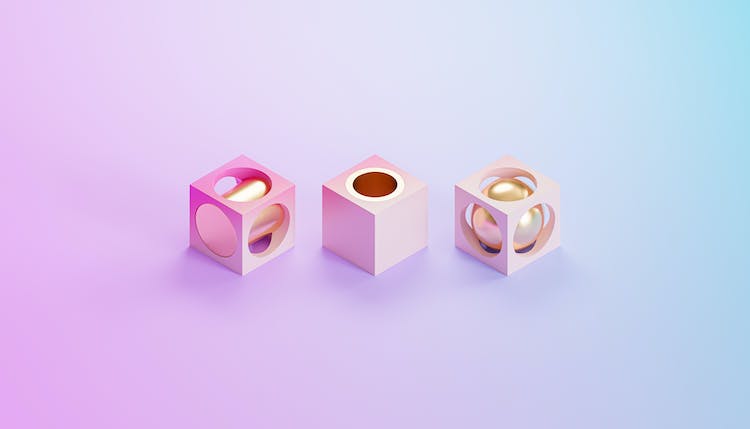Laser cutting has become increasingly popular in both design and manufacturing due to its ability to produce a wide variety of shapes and sizes with incredible accuracy, speed, and cost-effectiveness. It is now a key technology used in many industries, allowing for complex shapes to be created quickly and cost-effectively and providing an accurate way to cut materials that would otherwise be too difficult or expensive to cut with more traditional methods. This article will explore the various benefits that laser cutting can provide to designers and manufacturers, including increased production speed, better accuracy, and improved cost efficiency.
Efficiency of Laser Cutting
Improved Accuracy and Precision
The accuracy and precision provided by laser cutting make it one of the most efficient and effective ways of creating intricate shapes and designs. Lasers produce extremely accurate and precise cuts, allowing for intricate detail work that machines and tools simply cannot match. The accuracy and precision are especially valuable in the fields of engineering, manufacturing and product design, where small but important variations in size and shape can make the difference between the success and failure of the product.
The laser emits a focused beam that melts, burns or vaporizes material with extreme precision, allowing cuts to be made with accuracy of up to a few thousandths of an inch.
Accommodates Complex Design Requirements
When it comes to design and manufacturing, laser cutting offers enormous benefits. The accuracy, speed and efficiency of laser cutting make it an invaluable tool for both prototyping and production applications across a range of industries. One particular benefit of laser cutting lies in its ability to accommodate complex design requirements.
Unlike traditional cutting tools, laser cutters do not rely on molds or templates to determine cut patterns – instead, laser cutters are able to produce intricate shapes directly from a digital file. This means that it is easy to accommodate rapidly-evolving designs, even on short notice.
Automated Processes
Laser cutting is a type of manufacturing process that is becoming increasingly popular in the design and production world. By utilizing a laser to cut, score, or etch material, manufacturers can create detailed parts quickly with a high degree of precision. The automated process of laser cutting is ideal for a variety of applications, and it is particularly popular for applications that require detailed shapes or intricate designs.

Versatility and Flexibility of Laser Cutting
Right Angle Tweaking
When it comes to design and manufacturing, laser cutting is one of the most efficient and accurate methods available. It is a process used to cut or engrave materials like metal, wood, plastic, and paper. Laser cutters have the ability to cut shapes and pieces to precise tolerances due to the high levels of accuracy and speed achieved.
Laser cutting can also create crisp edges, sharp corners, and intricate details. One of the lesser appreciated advantages of laser cutting is the ability to create slight modifications in the cut without having to redo the entire cut. This is most commonly referred to as “right angle tweaking”.
Ability to Accommodate Various Materials
Laser cutting is a revolutionary process for producing complex shapes and features in a wide variety of materials from metals and plastics to paper and wood. The process involves focusing a laser beam onto any material to be cut and then using computer-controlled rotating and shifting mirrors to direct the beam accurately and with precision. The laser beam melts, burns or vaporizes away the material, leaving behind a virtually exact replica of the intended design.
One of the most significant advantages of laser cutting is its ability to accommodate different materials.
Non-Contact Cutting
Laser cutting is a manufacturing process that uses a highly focused laser beam to cut materials into different shapes. The laser is able to cut materials cleanly, accurately and with great precision because the laser beam’s intensity is so high, allowing it to melt, burn, or vaporize the material. Lasers are generally most commonly used for cutting metals and plastic materials, including fabric, leather, and paper.
Non-Contact Cutting One key benefit of laser cutting is its ability to perform non-contact cutting.

Cost Benefits of Laser Cutting
Faster Production Leading to Reduced Manufacturing Prices
When it comes to design and manufacturing, laser cutting is one of the most efficient and cost-effective methods of producing parts and components. Laser cutting is a process that utilizes a laser beam to cut through material such as plastics, metals, and fabrics. This cutting process is incredibly precise and can be used to create complex designs from the material being cut.
Using a laser to cut materials rather than traditional manufacturing methods, such as mechanical cutting and machining, offers many advantages. One of the major advantages of laser cutting is its speed.
Cost of Accessories and Maintenance
When you talk about laser cutting, one of the biggest advantages is the low cost of the accessories and maintenance. Laser cutters generally require very little in terms of setup and equipment, and their maintenance costs are much lower than that of traditional tools and cutting machines. This cost savings can largely be attributed to the fact that lasers require no additional cutting tools or blades.

Conclusion
How Laser Cutting has Revolutionized Design and Manufacturing
Laser cutting is a revolutionary technology that has had a big impact on the design and manufacturing industry. This technology uses high-powered laser beams to precisely cut and shape materials, allowing for greater accuracy and complexity compared to traditional methods like sawing, grinding, and drilling. Laser cutting machines are also highly automated, enabling them to work quickly and without frequent supervision.
The most notable benefit of laser cutting is its ability to cut intricate shapes and curves from a variety of materials. The laser beam, which is only microns across, follows the inputted design specifications with accuracy and consistency.
Long-term Benefits of Laser Cutting in Design and Manufacturing
The long-term benefits of using a laser cutter in design and manufacturing extend beyond just time, cost and potential efficiency savings. One of the major advantages of using a laser cutter, especially when compared to traditional mechanical cutting or machining, is the close tolerance that can be consistently achieved. This accuracy means improved surface finishes, less reworking of components and a better overall quality.
Another benefit of laser cutters is the ability to cut intricate designs in complex shapes.

